#n5 grammar
Text
N5 Grammar Review: Vない
The ない form of the verb is used to mean "not" or "don't". I'm going to make some posts about grammar that uses this form soon, but first I thought it'd be good to go over how exactly we get the ない form.
To make the ない form:
Group 1: change the last 'u' in the dictionary form to 'a', then add ない:
書く(かく)→ 書かない [to write -> not write]
話す(はなす)→ 話さない [to speak -> not speak]
立つ(たつ)→ 立たない [to stand -> not stand]
遊ぶ(あそぶ)→ 遊ばない [to play -> not play]
読む(よむ)→ 読まない [to read -> not read]
知る(しる)→ 知らない [to know -> not know]
Be careful! If the verb ends in う, it becomes わ:
歌う(うたう)→ 歌わない [to sing -> not sing]
買う(かう)→ 買わない [to buy -> not buy]
Group 2: add ない to the stem:
食べる(たべる)→ 食べない [to eat -> not eat]
寝る(ねる)→ 寝ない [to sleep -> not sleep]
見る(みる)→ 見ない [to see -> not see]
教える(おしえる)→ 教えない [to teach -> not teach]
Group 3 of course is a bit different:
する → しない [to do -> not do]
来る(くる)→ こない [to come -> not come]
The ない form is used in casual speech to mean "don't/doesn't do":
Particles in brackets because you can drop them in casual speech.
魚(は)食べない
さかな(は)たべない = I don't eat fish
父(は)雑誌(を)読まない
ちち(は)ざっし(を)よまない = My dad doesn't read magazines
コーヒー(を)全然飲まない
コーヒー(を)ぜんぜん のまない = I don't drink coffee at all
Other than that, the ない form is used a lot as a base for more complex grammar. It's important to get to grips with it early on.
I'm still a beginner myself (I'm only N4 level!) so please let me know if I've made any mistakes!
#japanese langblr#learning japanese#japanese grammar#japanese for beginners#beginner japanese#n5#n5 grammar
99 notes
·
View notes
Text
questions · positive and negative replies
(。•̀ᴗ-)✧ N5 grammar
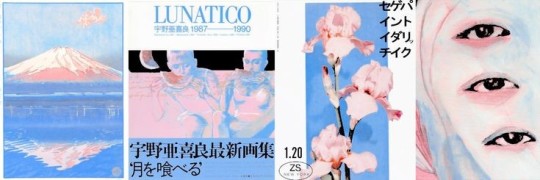
indicating a question with "か"
Questions in Japanese are easily expressed with the particle "か" and it is used the same way as the English question mark. A phrase ending with this particle is the Japanese equivalent to a question in English. In Japanese, there's no need to rearrange the sentence structure, simply add the question particle.
example: あなたは日本人です (you are japanese) will become → あなたは日本人ですか (are you japanese?)
note 1: in formal documents or written japanese, there should be a period (。) at the end of a question; in everyday Japanese, both periods and question marks work.
note 2: when asking a question the particle should be said with a rising tone.
affirmative replies with "そうです"
"そうです" is a compound phrase and means "right" or "that is so". It is usually used after "���い" (yes) and can also soften the tone when giving a positive answer.
example: はい、そうです。
translation: yes, that is so.
note: Japanese people tend to add another phrase following "そうです", expressing further confirmation
negative replies with "違います"
When denying something or telling someone something is not true, the compound phrase "違います" (ちがいます) is used. It is often used after "いいえ" (no).
example: いいえ、違います。
translation: no, that's not so.
note: 違います can be followed by other sentences clarifying the negation, similarly to そうです
またね~@inkichan
꒰ა ˚₊ ✧・┈・╴﹕꒰ ᐢ。- ༝ -。ᐢ ꒱﹕╴・┈・𐑺 ‧₊˚໒꒱
#japanese#nihongo#studyblr#learn Japanese#learning Japanese#japanese langblr#langblog#japanese studyblr#日本語#study japanese#study inspo#study aesthetic#n5#JLPT N5#grammar#basic grammar#japanese grammar#n5 grammar
106 notes
·
View notes
Text
時(とき)- When, at the time of
Verb + とき
[い]Adjective + とき
[な]Adjective + な + とき
Noun + の + とき
出かけるときは、「行ってきます」と言います。
When you go out, you say "いってきます"!
私はカラオケに行くときに楽しめます。
When I go to karaoke, I can have fun.
Can you create a sentence using this grammar?

#Japanese#Japanese grammar#Learn Japanese#Beginner Japanese#Intermediate Japanese#Study Japanese#JLPT Grammar#JLPT#N5 Grammar#N4 Grammar#N5#N4#nihongo
38 notes
·
View notes
Text
*dictionary form+つもり(tsumori)*
Plan to/intend to
>>>>>>>>>>>>>>>>>>>>>>>>>>>>>>>>
Eg1. 明日、パーティーに行くつもりです
Ashita paatii ni iku tsumoridesu
I plan to go to a party tomorrow.
>>>>>>>>>>>>>>>>>>>>>>>>>>>>>>>>
Eg2. 卒業したら日本に留学するつもりです
そつぎょうしたら にほん に りゅうがくするつもりです
Sotsugyoushitara Nihon ni ryuugakusuru tsumoridesu
After graduating I plan to study in Japan.
>>>>>>>>>>>>>>>>>>>>>>>>>>>>>>>>
ない form+ つもりです OR dictionary form+ つもりはない。
Don't intend to/don't plan to
~~~~~~~~~~~~~~~~~~~~~~~~~~~~~~~~~~~~~
夏休みの間に勉強しないつもりです
Natsuyasumi no Aida ni benkyoushinai tsumori desu.
OR 勉強するつもりはない
Benkyousuru tsumori wa nai
(I don't intend to study during summer break)
2 notes
·
View notes
Text
本日
formal
mostly used in broadcasts and news
今日
Informal
mostly used in conversation
0 notes
Text
The 6 Differences Between は and が
DIFFERENCE 1
The important fact is AFTER は
• この犬は私のベットです。This dog is my pet.
You want to emphasize that this is not a stray dog. It is not someone else's pet dog. It is MY PET. So anything comes after は is the main part you want the listener to pay attention to.
The important fact is BEFORE が
• この犬が私のベットです。This dog is my pet.
You want to emphasize that THIS IS THE DOG that is my pet. Not other dogs. Imagine you're at a park and there are 3, 4 other dogs playing together with your dog and you want to tell your friend that THIS DOG is the one that is your pet dog, other dogs are not yours. So, what comes before が is the main part you want to tell the listener.
More examples:
• このケーキはおいしいです。This cake is DELICIOUS! (You want to tell your friend that this cake is indeed very good. Your emphasis falls on おいしい, so you use は, because the important fact is AFTER は.
• このケーキがおいしいです。THIS CAKE is delicious. (You want to tell your friend that among all the cakes on the buffet table, this particular cake you are pointing to is the most delicious one. Others are not good.) Your emphasis falls on このケーキ (THIS CAKE), so you use が, because the important fact is BEFORE が.
DIFFERENCE 2
New information and things that you mention for the first time, use が. Old information or topics that have been mentioned earlier but is now repeated again, use は.
• 学校にマイクという男がいます。There is boy named Mike in my school.
You started the conversation with your friend by saying there's a new student named Mike in the school. That is the first time you mentioned Mike. It is new information, therefore use が.
• マイクはアメリカ出身です。Mike is from America.
You mention Mike the 2nd time now and it is no longer a new information. It is considered old information, therefore use は.
DIFFERENCE 3
Stating facts without adding your personal opinion or judgment use が. By adding your own opinion or judgment, use は.
• 外に猫がいます。There is a cat outside.
You are just merely stating a fact that there is a cat outside. This sentence doesn't include your description about the cat. No personal opinion or judgment about the cat.
• あの猫は白いです。The cat is white in colour.
You are putting your description, your judgment into the sentence about the cat. When you are adding your own thoughts, opinion, description about something, use は.
• 日本の料理はおいしいです。Japanese food is tasty.
You are putting your opinion/judgment about Japanese food in your sentence, therefore, use は.
DIFFERENCE 4
When you make comparison, use は. When you eliminate other options, use が.
• お茶は好きですが、コーヒーは好きじゃありません。I like tea but I don't like coffee.
DIFFERENCE 5
If two actions are done by the same person, use は. If two actions are done by two different persons, use が first, then use は for the second action.
• 私はごはんを食べるとき、テレビを見ます。I have my meal and I am watching TV.
• 私がごはんを食べるとき、父はテレビを見ます。When I have my meal, my father watches TV.
DIFFERENCE 6
To modify a phrase into a noun, use が.
• これは彼女が作ってくれたケーキです。
What cake is this? This is the cake that is baked by my girlfriend. The phrase 「彼女が作ってくれた」 is to modify the cake, to describe about the cake.
Quiz Time
• 部屋は広いです。
• 部屋が広いです。
In English, both sentences mean "The room is spacious." But what is the difference?
In 部屋は広いです, it shows a comparison contrast nuance (read DIFFERENCE 4). If you say this, the listener will believe that you are making a comparison of this room with all the other rooms in the house. You want to say this room is spacious, whereas the other rooms are smaller in size.
In 部屋が広いです, you are merely stating a general fact about this room being spacious (read DIFFERENCE 3). You are not making any comparison. Your sentence has no added personal judgement or opinion. You are stating a fact about the room being spacious.
#japanese#nihongo#studyblr#study blog#study japanese#study motivation#learning#learn japanese#language#grammar#jlpt#jlpt n5#jlpt n4#jlpt n3#jlpt n2#jlpt n1
151 notes
·
View notes
Text
Where to begin when reading native novels to work on reading comprehension?
So, you've made it to the point where you'd like to branch out and read some novels and children's books in Japanese? Then you've come to the right place! Let's talk about three helpful publishers (Kodansha, Kadokawa, and Shueisha) that can make reading native materials less daunting!
The Kodansha Aoitori Bunko Books (青い鳥文庫) were created and published by Kodansha with elementary schoolers in mind, so almost all kanji has furigana on it. The text is larger and there's normally a bit more spacing in between it (like our children's chapter books in English). Just like other children's chapter books, there are occasional photos included. Aoitori Readers include both original series as well as some translations of international literature (i.e., Little Women, Murder on the Orient Express, Sherlock Holmes, etc.). There are also some adaptations of other series はたらく細胞 (Cells at Work) Those books have blue around the cover.

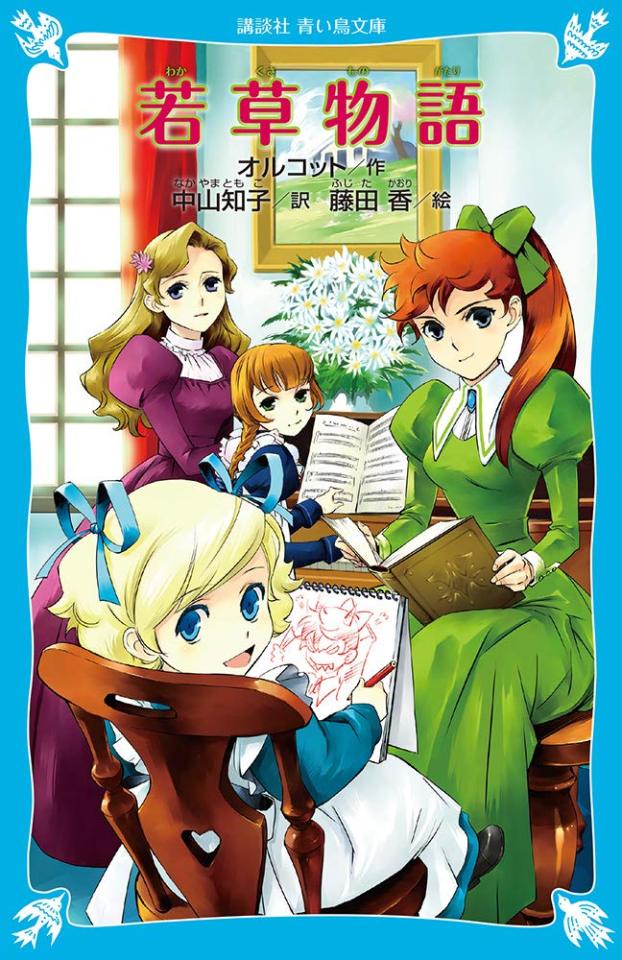
The Kadokawa Tsubasa Bunko Readers (角川つばさ文庫) operate on the same concept, except the series are normally on a more advanced level. With this in mind, they may use more advanced grammar than the Aoitori series. There are original series, but sometimes books/series for a higher comprehension levels will be adapted into Tsubasa Bunko Readers. This includes popular Japanese novels and series as well as international classics (i.e., Chronicles of Narnia, Pippi Longstocking, Anne of Green Gables, etc.). For adaptations of Japanese novels and series, there will be the "regular" version of the novel and then the Tsubasa Bunko version bc it's the same kanji, same grammar, same words. It'll also supply the furigana for those kanjis and might give little annotations or some photos here and there. For example, the award-winning novel 夜は短し歩けよ乙女 (The Night is Short, Walk on Girl) by 森見 登美彦 (Morimi Tomihiko) has both the "regular" publication and the Tsubasa Bunko version. Tsubasa Bunko Readers have green around the cover. Click on the links to get a preview of each version to compare and contrast.
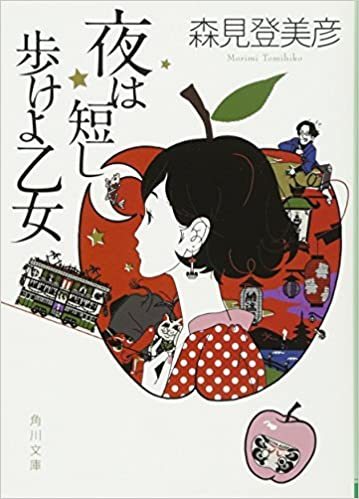

The Shueisha Mirai Bunko Books also operates the same. There are adaptations of manga series (like Kaguya-sama: Love is War and Demon Slayer) as well as original series. Mirai Bunko Readers have orange around the cover.

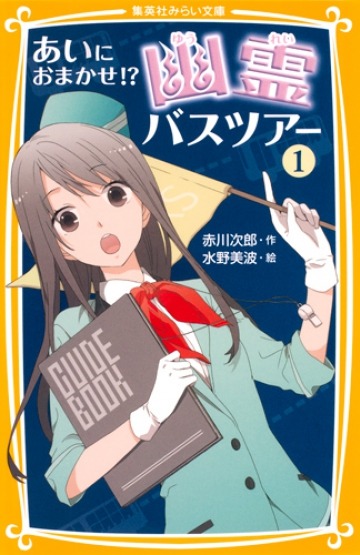
If you're worried about attempting to read any of these on your own, come suggest some of them for us to read together at the Seitokai Bookclub! (And even if it doesn't get selected immediately, someone might be interested in being a reading buddy with you :D).
Happy reading!
#onigiri thoughts#aoitori readers#tsubasa bunko readers#seitokai bookclub#japanese#japanese reading comprehension#mine#mirai readers#reading resources#looktoki#jpnstudynet#jlpt#japanese reading#jlpt n1#jlpt n3#jlpt n2#jlpt n4#jlpt n5#vocab#jlpt grammar#jlpt reading#jlpt studying#nihongo#learn japanese#kodansha#kadokawa#shueisha
418 notes
·
View notes
Text
JLPT N5 - くなる and くする
This grammar point is very simple. You use くなる when the condition of something becomes a certain way by itself. On the other hand, くする is used when the condition of something is changed by an outside agent (either a person or a thing). In this post, let’s look at these two very basic constructions and how the Japanese works.
Here is your vocabulary:

【The Grammar】
The grammar is very simple. First, you take an adjective or a noun and change them to their adverbial forms. For example, the adjective 長い has an adverbial form of 長く. The noun ひま has an adverbial form of ひまに.
After you make the adverbial forms of the adjective or the noun, you just put it before either なる or する. That’s it!

We talked about the く connector in this post and about the adverbial に in this post.
I should point out that while this grammar point appears in most JLPT books and websites as くなる and くする, as you can see in the picture above, nouns don’t use く! For that reason, I choose to call this point adverb ✙ なる and adverb ✙ する.
【adverb + なる】
Here are some examples with なる:
① 熱が下がって、気分がだいぶ{よくなりました}。
=fever will go down and then feeling became considerably better
= My fever went down and then I felt much better.
② この仕事が終わったら、少し{ひまになる}と思います。
= when work finishes, a little bit, will become free, I think
= I think that when work finishes, I’ll have more time.
③ このごろ仕事が減って、前ほど{忙しくなくなった}。
= these days, work decreased and so as much as before, became not busy
= These days, I have less work and so I’m not as busy as before.
④ きみは{大人になったら}、{何になりたい}の。
= when you become an adult, what want to become
= When you grow up, what do you want to be (and explain)?
Some things to notice:
In example 1, the sense is that when the fever went down, the person’s mood got better by itself.
In example 2, the condition of having more free time arises naturally when work decreases. (ひま can have the connotation of having absolutely nothing to do and can be considered rude by some people. I use the word for myself sometimes, but I never seriously refer to other people as ひま.)
Concerning example 3, the negative form of 忙しい is with 忙しくない. If you want to make THAT into an adverb, it will become 忙しくなく. This was very difficult for me when I was just beginning Japanese.
Finally, Example 4 shows that the question word of 何 can be treated as a noun. This makes sense if you think of it as a placeholder for whatever answer the listener will give. Also, because the speaker uses the word きみ we know that the speaker and listener are close. It would make sense if it were a parent-child relationship. きみ is NOT used with people that you have just met or that you don’t know well!
【adverb + する】
Here are some examples with する:
⑤(父が子どもに)もっと部屋を{きれいにしなさい}。
= father to his child: a little bit more the room, make it clean
= Clean up your room a bit more.
⑥ このケーキ、ちょっと大きいから、{半分にして}ください。
= this cake, a bit big and so make it half please
= This cake is a bit (too) big so please cut it in half.
⑦ スカートを5センチぐらい{短かくして}ください。
= this skirt, about 5 centimeters make it short please
= Please shorten this skirt about 5 centimeters.
Notice that examples 5, 6 and 7 all include someone (other than the speaker) making a thing (a room, a cake, and a skirt) a different condition than the current one. This is when you will want to use adverb + する.
【Conclusion】
The grammar points of adverb ✙ なる and adverb ✙ する are pretty simple to understand. That is why they are considered Level N5. Adverb ✙ なる shows a person or a thing becoming a different condition by itself. Adverb ✙ する shows a person or a thing changing to a different condition by a different person or thing.
Thanks for reading, and see you next time!
Rice & Peace,
– AL (アル)
👋🏾
#japanese#japanese grammar#learn japanese#japanese language#japanese lesson#japanese study#japanese vocabulary#japanese vocab#japanese verbs#studying Japanese#japaneselessons#learnjapanese#japanese studyblr#japanese langblr#JLPT#JLPT N5#jlptn5#にほんご#日本語#日本語の勉強#一緒日本語#language#languages#language study#language studyblr#language blr#IsshoNihongo
388 notes
·
View notes
Text
What should I use after Genki? Books I used for N5 + N4
youtube
English sub included ⭐
#japanese#kanji#japanese language#learning japanese#japanese langblr#Jlpt#jlpt n5#jlpt n4#にほんごべんきょう#にほんご#nihongo#japanese book#learn japanese#japanese grammar#japanese vocabulary#Youtube
15 notes
·
View notes
Video
youtube
28 notes
·
View notes
Text
i've been so consistent with japanese for the past 2 months and i know i'm making progress but at the same time whenever i see a kanji i can't read i'm like. it is impossible for me to ever learn japanese i can't understand ANYTHING and i will literally never get better it is embarrassing and i should just stop etc.
#i always focused on the vocab and kanji instead of grammar bc that's how i learned english lmao#i mean by reading/listening and not really understanding the rules#but this year i wanted to focus on the basics so even though my kanji level is somewhere between n4 and n3#i went through the entire n5 coursebook i bought like... 15 years ago omg and i made sure i understand and remember all the grammar rules#and then moved onto n4 grammar coursebook#and honestly i am blown away agkdgjsjd so many things i've known instinctively started making sense#and i noticed i learn faster#bc i already have the words and i am used to the language so applying the rules is easier#so uhhhh fucking around for 10 years instead of diligently studying wasn't entirely a waste of time ig????#but of course i'm starting to get impatient sgjsfjsj i need to buy n3 coursebook soon and then the real fun will start#k.txt#for the past year i've really been living the naruto way. believe-iting my way through shit
7 notes
·
View notes
Text
yeah i’m seriously thinking of applying for jlpt n4
#i just think n5 won't encourage me to push myself whereas n4 will#it only tests receptive skills anyway#if it tested productive skills too i'd be a bit more hesitant#but receptive skills is easy. just gotta learn the vocab and the grammar and the kanji readings#don't have to worry about producing comprehensive sentences
37 notes
·
View notes
Text
this · that · that over there · which (demonstrative adjectives)
(。•̀ᴗ-)✧ N5 Grammar [ことのは lesson 3.2]

we already saw これ, それ, あれ, どれ that are demonstrative pronouns. In this post we'll cover demonstrative adjectives. They are used with nouns. You can refer to a specific item without using a proper name.
note: these are always followed by a noun, so don't confuse them with the pronouns.
"this" with "この"
"この" is used if the item is located near the speaker but not near the listener.
example: この本 (ほん) ですか
translation: is it this book?
"that" with "その"
"その" is used if the item's near the listener but not the speaker.
example: その辞書 (じしょ) ですか
translation: is it that dictionary?
"that over there" with "あの"
"あの" is used if the item's far from both of them.
example: あの鞄(かばん)ですか
translation: is that bag (over there)?
"which + noun" with "どの"
"どの" is an interrogative pronoun which is used for asking "which + (noun)?"
example: どのペンですか
translation: which pen?
またね~@inkichan
꒰ა ˚₊ ✧・┈・╴﹕꒰ ᐢ。- ༝ -。ᐢ ꒱﹕╴・┈・𐑺 ‧₊˚໒꒱
#japanese#nihongo#studyblr#learn Japanese#learning Japanese#japanese langblr#langblog#japanese studyblr#日本語#n5#JLPT N5#grammar#basic grammar#japanese grammar#n5 grammar#ことのは
48 notes
·
View notes
Text
The Complete JLPT N5 Grammar Video(Game) Textbook
youtube
2 notes
·
View notes
Text
The Difference Between に and へ
Most of the beginner textbooks will teach learners that に is used for destination and へ is used for direction but there are some explanation that are missing and that is what confusing to many learners.
• 公園に行きます。
• 公園へ行きます。
Both sentences are correct. Both means "I'm going to the park".
But... there is a slight nuance difference. When you use に, you put the destination (which is the park) as the main thing you want the listener to know that the place you want to go is the park. The final destination you will arrive at is the park.
On the other hand, if you use へ, you want the listener to feel that you are making a move, you are making a journey, a process, an effort to go to the park. In other words, へ somehow emphasize on your journey to a place.
Let's say you're flying from UK all the way to Australia, that will take at least 20-22 hours by flight. The journey is extremely long and you want the listener to feel that, so you could say by using the particle へ: 私はオーストラリアへ行きます。
Now, the following part is what most teachers or textbooks didn't tell you. A study shows that more and more Japanese people are using に, and へ has gone out of fashion. According to the survey, one of the reasons may be due to globalization and how easily people are connected around the world through the Internet that people don't feel the journey or the distance is long. Therefore, they don't see the need to use へ anymore.
WARNING!!!
There is a grammar point that you MUST use へ instead of に。The pattern is:
へ + の + Noun
Examples:
• 先生へのプレゼント。Gift for teacher.
• 帰宅への道。The way home.
Another situation which needs to use へ is when the news anchor announces this:
台風が北へ向かっています。
The typhoon is heading north.
If you use に and say 台風が北に向かっています, it means you are very sure that the typhoon will land in the north. No one can predict 100% where it will stop or land so it is incorrect to use に in this sentence.
---------------------------------------------------
Vocabulary used in this lesson:
公園 (こうえん) park, playground
プレゼント present, gift
帰宅 (きたく) home
道 (みち) way
台風 (たいふう) typhoon
北 (きた) north
#study japanese#japanese#jlpt#jlpt n1#jlpt n2#jlpt n3#jlpt n4#jlpt n5#language#learn japanese#nihongo#grammar
87 notes
·
View notes
Text
Let's Learn Natively (TL :Japanese) | Reading
Why it's important to read as much native materials as you possibly can in your target language and where/how to start.
※ When learners first embark on their journey of picking up a new language, the first thing we do is familiarize ourselves with the alphabet, pronunciation, and other important innerworkings on the language. With Japanese, the first step is to learn hiragana and katakana. A lot of people stop in the middle of that because they feel that it's not worth learning the language if they have to learn that many letters. But what if you've made it past that point? Where do you go from there? Of course, we move on to basic grammar and sentence structure so that you can begin to understand why sentences are formed the way that they are. (and, of course, vocab words).
※ However, while textbooks and workbooks do teach us the way that sentences are formed, it's stiff. Of course, the purpose behind that is to make sure that you understand the basics before you move on to more native/nuanced versions of the structures. But once you're ready to do that, where do you go? Click below to keep reading:
★If you're ready/interested in reading native material, and you don't know where to start, I highly recommend trying out Natively. Think of this as a goodreads for Japanese learners.
★If you're concerned about picking a book or series that's too difficult or too long for you, the website has already taken that into account. The website is structured so that all of the books and series that are on there are added, graded, and reviewed by fellow Japanese learners. The grading system that is utilized goes from Level 0 to Level 41; the grades roughly correspond with JLPT levels (if you're preparing for the JLPT and are trying to prepare for the reading comprehension section). You can learn more about the grading system by clicking here.
★The website includes all sorts of books: textbooks, graded readers, light novels, manga, novels, children's books, short stories, and other kinds of books. When you click on a title or see it in the search results, the color coded grade will pop up next to it. These grades are user-determined. When users finish reading a book, we're prompted to grade the difficulty level in comparison to other books that we may have already read. In doing so, the difficulty level of the book might change when calculated in with other reviews. The point of this is to help fellow learners gauge what types of reads you find find difficult and which ones you find to be easy. Here's an example photo:
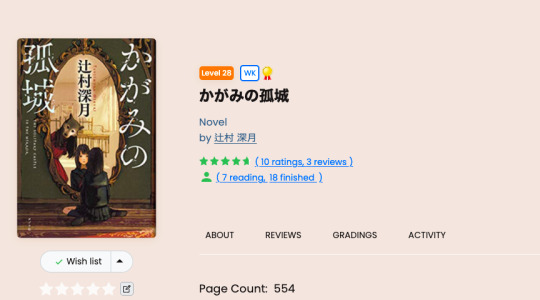
☞Caveat: don't feel discouraged if you found a book to be difficult even though it didn't seem like it would be. Everyone thrives in different areas and different subjects. Just because something was graded at N5 and you had difficulties with it at N3 doesn't mean anything--it might mean that it wasn't something to your liking. There are some series that I have difficulty with because of pacing or because I lacked interest in it.
❀ If you're worried about reading a book or series on your own and you're looking for friends to read and discuss about it with, come join us over on the discord and propose it as an option in the bookclub.
㉄ Can't find a particular book or series that you're looking for on the website? You can request for it to be added here.
★ The website is also equipped to let you "organize" your library into categories and track your reading progress. Additionally, you can make your library and reading progress private if you don't want anyone to see. As I'm currently using this blog to be as open as I can possibly be on my language learning journey, mine is made public. Feel free to check me out on the website.
★This is not sponsored, but if you receive a welcome message from Brandon, the owner and creator of the website, tell him that maobuchou sent you (that's me! ☺️). Brandon is really nice, so if there's anything that you're confused about or if you have suggestions for the website, he has an option for you to contact him.
★If you're interested in seeing what I'm currently reading, what I'm interested in reading next, and what I've graded thus far, click here to follow me (I'll follow back). Following other users allows you take a peek at what books they're reading. I also update my profile to say what book is also being read in the discord bookclub.
There will be more posts to come in the future about ways to become comfortable with reading in your target language.
#onigiristudies#japanese#learn japanese#nihongo#jlpt#resources#natively#jlpt n3#jlpt n2#jlpt n4#jlpt n1#jlpt n5#japanese grammar#japanese vocab#japanese langblr#learning japanese#langblog#japanese vocabulary#japanese studyblr
460 notes
·
View notes